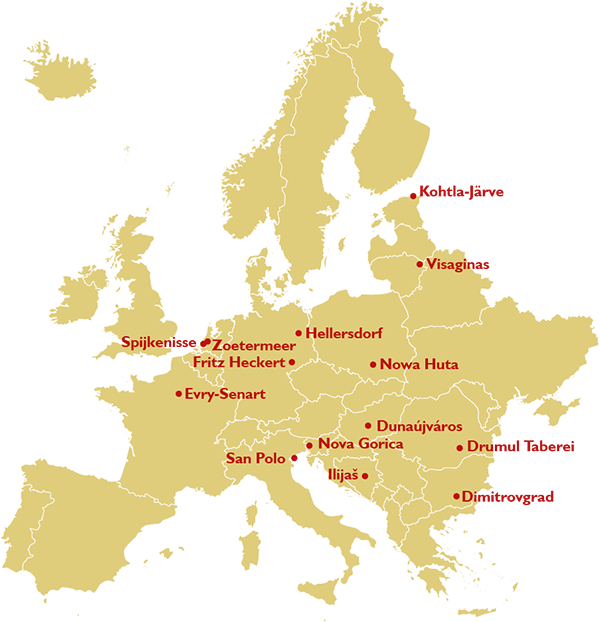(Grand Paris Sud)
In 1965, Évry changed from a small village to become a city, when it became part of the French New Town initiative. Évry was developed faster than other New Towns at the time. In 1968 there were already 155,000 residents in the region and this rose to over 200,000 by 1972. This rapid expansion threatened the soil and water table. Planners planted large woodlands in order to protect the local ecosystem and viability of the town. Évry is a centre for a wide range of commerce and services. Located in both the Seine-et-Marne and Essonne départements, Sénart was the last of the new towns to be developed under President Charles de Gaulle’s 1967 government plan. Its Établissement Public d’Aménagement (E.P.A.) was set up in 1973, but it really took off in the 1980s.
The new town of Senart is composed of ten communes: Cesson, Combs-la-Ville, Lieusaint, Moissy-Cramayel, Nandy, Réau, Savigny-le-Temple, Vert-Saint-Denis, Tigery and Saint-Pierre-du-Perray. In 2016, Evry and Sénart became part of Grand Paris Sud (GPS), an urban agglomeration which merged 23 municipalities Today, the agglomeration is home to more than 350,000 inhabitants. The two new towns have very different characteristics and issues: Evry is more urban with a dense urban centre – the challenge here is linked to the renovation of the urban core and the attractivity, while Sénart is more “city in nature” and GPS is developing a strategy to better consider its green assets.
The territory of the agglomeration Gran Paris Sud is highly diverse, with many economic and social contrasts. There are 19 priority neighbourhoods in the agglomeration of Gran Paris Sud with low-income populations. They are covered by the national “city policy” program for the reduction of inequalities and urban renewal. Many of the inhabitants of these neighbourhoods have a migrant background. The agglomeration is implementing programs for social and professional inclusion. One of them is the inter-communal linguistic coordination, to accompany the public towards social and professional integration through French language learning. A tool called AVEC was created to fight illiteracy and to improve access to French language for migrant allophones, regardless of being newcomers, with little or no qualifications and job seekers. Next to that, the program AVEC Elles deals with the integration of vulnerable women in the labour market.
Grand Paris Sud is working on different strategies to make its territory more sustainable and to ensure the just and inclusive ecological transition for its inhabitants: development of Eco-neighborhoods, development of heating networks, raising awareness among residents (positive energy families, composters, etc.), reuse of brownfield sites, reuse of soil, reuse of materials, bicycle plan and active transport links, reflection on food and urban agriculture.





